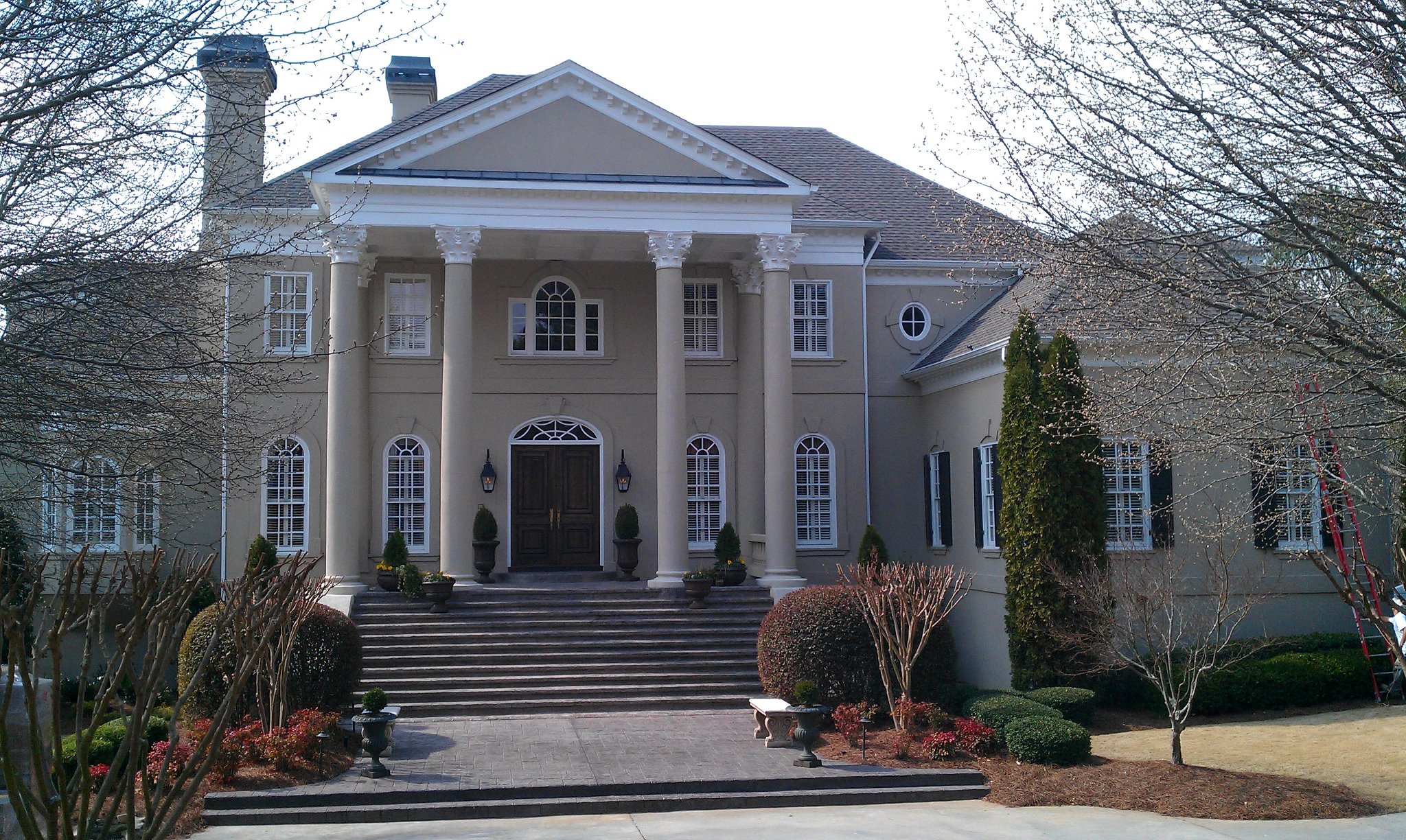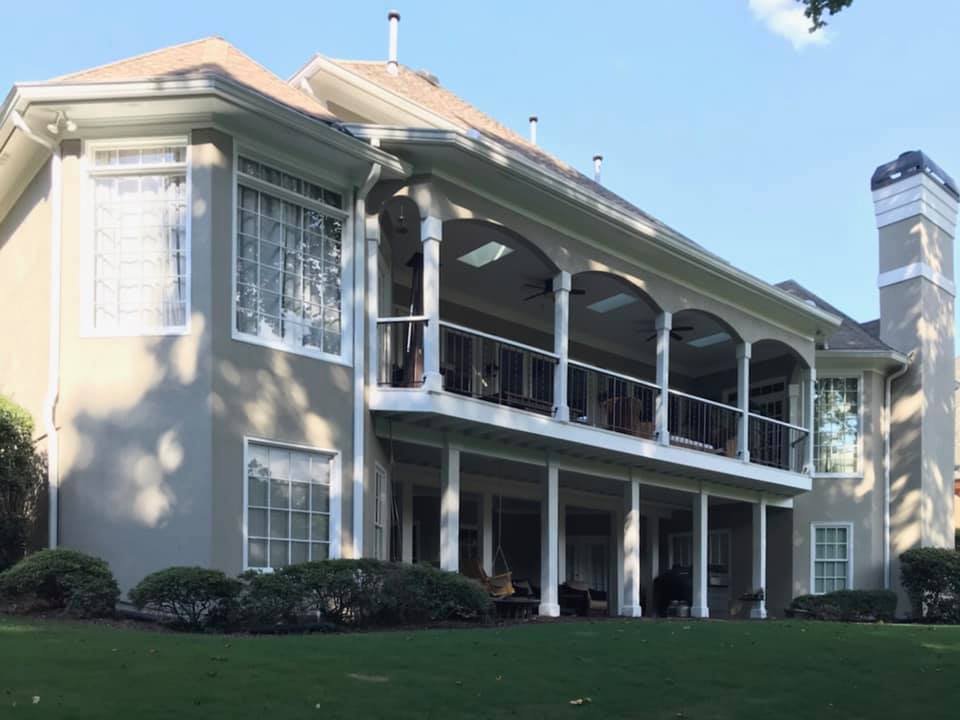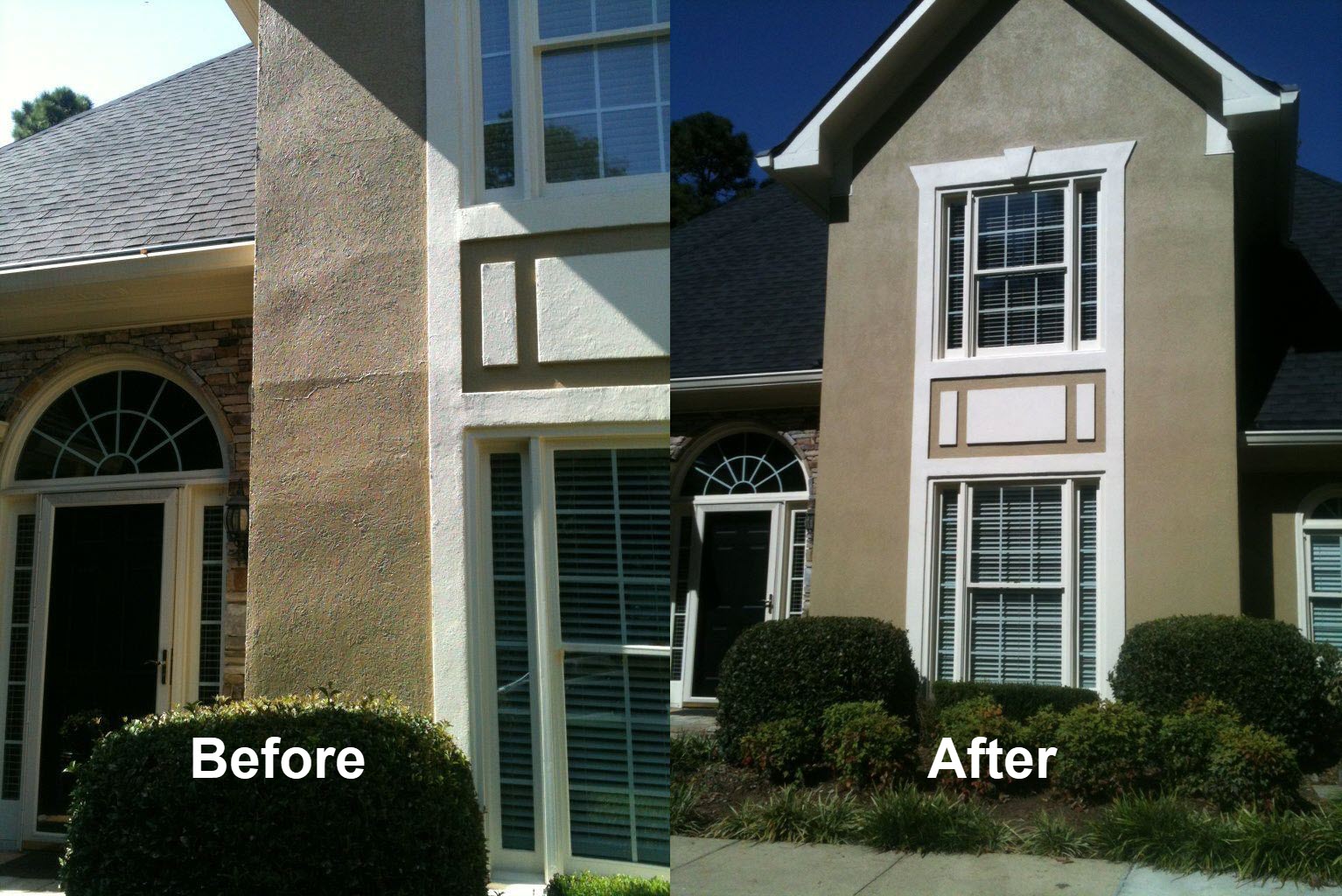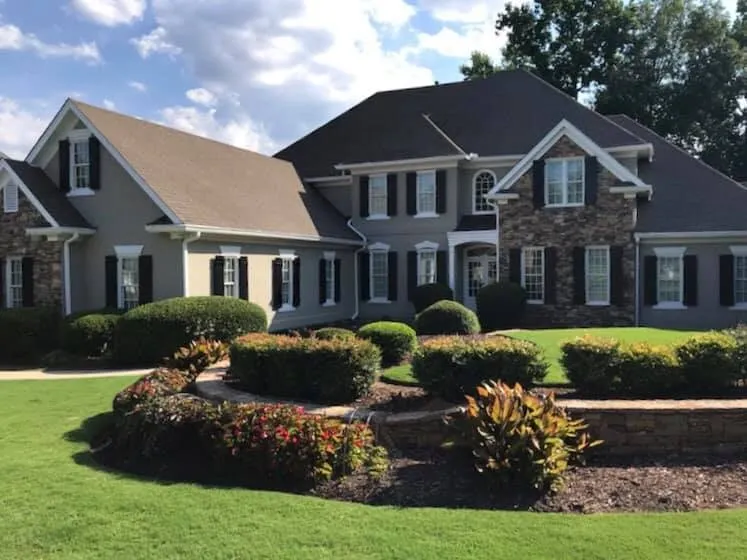EIFS Exterior Insulation Finishing Systemin Vinings GA
EIFS Exterior Systems for Energy Efficiency and Durability
We Are Locally Owned & Operated For Over 24 Years
We Serve Businesses In And Around The Following Cities:
About Eifs Exterior Insulation Finishing Systems in Vinings, Georgia
The Role of EIFS in Modern Building Design in Vinings, Georgia
In the charming community of Vinings, Georgia, where residential and commercial buildings reflect a blend of southern charm and modern architecture, the need for dependable insulation and aesthetically pleasing exteriors has never been more critical. This is where the Exterior Insulation Finishing System (EIFS) comes into play, offering an innovative solution for building exteriors. Advanced Stucco Repair, a leading provider in this domain, uses EIFS to enhance dwellings with an ideal combination of energy efficiency, resilience, and curb appeal.
EIFS, also known as synthetic stucco, is not just a modern solution; it is a composite material that has gained popularity in the construction industry for its excellent insulation properties and customizable design options. Its significant role in both residential and commercial property development cannot be overstated. This article will delve into the process and benefits of installing EIFS, highlighting how Advanced Stucco Repair leverages this system for effective stucco repair and installation.
Understanding EIFS: The Basics
The Exterior Insulation Finishing System is a multi-layered wall system that consists of an insulation board attached to the exterior surface of a building, with a durable, protective finish applied on top. This type of finishing system offers a seamless, aesthetic surface that can mimic various materials like natural stone, brick, or traditional stucco. Developed in Europe during the post-war era as a means to rapidly repair damaged buildings, EIFS has evolved into a sophisticated method for improving building energy efficiency by creating an insulating barrier on the exterior.
In Vinings, where architectural integrity and utility are both valued, EIFS offers a means to maintain traditional aesthetics while promoting energy efficiency. The resulting system significantly reduces the amount of heat transfer through walls, which can lead to substantial energy savings in both residential and commercial settings.
The Installation Process
Implementing an Exterior Insulation Finishing System is a meticulous process that Advanced Stucco Repair excels at executing. The first step involves assessing the project's unique requirements, taking into consideration factors like climate, building design, and desired aesthetic. Vinings, known for its varying climate conditions, benefits from EIFS installations that are customized to endure local weather patterns.
The installation begins with applying a weather-resistant barrier (WRB) to protect the underlying structure from moisture intrusion. Ensuring that this is perfectly executed is crucial as it forms the primary line of defense against water damage. Following this, insulation boards are mounted securely, offering a continuous layer that mitigates thermal bridging.
Once the insulation is in place, reinforcing mesh is embedded within a base coat that is applied insulation. This enhances the wall system's durability and strength. The final step involves applying a choice of finish coats, each available in various colors and textures, allowing for this aesthetic flexibility. Such options mean residential properties can maintain their traditional allure, while commercial buildings project a sleek and modern appearance.
Benefits of EIFS: A Comprehensive Look
The adoption of EIFS systems in buildings throughout Vinings provides numerous benefits. One of the most notable is its superior energy efficiency. Buildings lose a significant amount of heat through their walls, but the insulation provided by EIFS significantly reduces this, leading to potentially large savings on heating and cooling costs. This aspect is particularly relevant in the diverse climate of Georgia, where temperatures can vary drastically between seasons.
Aesthetic versatility is another prominent advantage. EIFS can be adapted to achieve various textures and finishes, allowing property owners in Vinings to install façades that reflect their personal style or align with community architectural standards. Whether the goal is to mimic a classic brick structure or achieve a contemporary minimalist finish, EIFS provides these options.
Durability and low maintenance further contribute to the appeal of EIFS. With proper installation and occasional inspection, these systems can endure for decades, resistant to common stucco problems such as cracking or water infiltration. Advanced Stucco Repair has become adept at recognizing potential issues before they manifest, ensuring that EIFS systems continue to perform exceptionally well with minimal maintenance.
Commercial Applications of EIFS
The application of Exterior Insulation Finishing Systems extends beyond residential properties, with a substantial impact on commercial buildings across Vinings. Retail spaces, offices, and hospitality venues benefit immensely from the energy efficiency and the customizable aesthetic that EIFS offers. For commercial properties, where curb appeal can influence client impressions and overall business success, EIFS provides a cost-effective method to maintain a polished, attractive exterior.
Business owners recognize the long-term savings attributed to EIFS's insulating qualities. Reduced energy consumption directly translates into lower utility bills, allowing companies to allocate funds elsewhere. Moreover, improvements in building insulation contribute to a more comfortable interior environment for employees and customers, enhancing the overall experience within the property.
Residential Appeal and Performance
For homeowners in Vinings, the decision to use an EIFS system often comes down to its dual capacity to enhance aesthetic appeal while simultaneously lowering energy expenses. Advanced Stucco Repair offers tailored solutions that cater to individual homeowners' preferences, ensuring that installations align with the community's character and personal tastes. The added protection against external elements means that residents can enjoy a comfortable living environment regardless of outdoor temperature fluctuations.
Furthermore, the versatility of EIFS in mimicking other materials allows homeowners to achieve a variety of looks—from Mediterranean-inspired exteriors to modern, sleek surfaces—without the high associated costs or maintenance requirements. This adaptability has made EIFS a popular choice among those looking to remodel or update their homes without substantial structural work.
Repair and Maintenance
Even though EIFS is renowned for its durability, like all exterior systems, it requires periodic maintenance and repair to extend its lifespan. Advanced Stucco Repair is proficient in addressing common issues associated with EIFS, such as minor impacts or breaches in the moisture barrier. Regular inspections and prompt repairs play an essential role in preventing more significant damage, such as moisture infiltration under the insulation, which may lead to costly repairs if not immediately addressed.
The repair process typically involves diagnosing and assessing the extent of any damage, followed by executing tailored solutions to restore the EIFS to its original condition. The experienced team at Advanced Stucco Repair is equipped to handle these tasks efficiently, ensuring disruptions are minimized, and the exterior integrity is preserved.
Choosing Advanced Stucco Repair for EIFS Installation in Vinings
For residents and business owners in Vinings, selecting an experienced and reliable service provider is critical to ensuring optimum outcomes from EIFS applications. Advanced Stucco Repair stands out in this regard due to its deep understanding of local architectural nuances and climate-specific requirements. Their hands-on experience and commitment to quality make them a trusted partner in both new EIFS installations and maintenance tasks.
Moreover, their tailored customer service approach means each project receives the necessary attention to detail, ensuring results consistently meet or exceed client expectations. By choosing Advanced Stucco Repair, property owners can proceed with confidence, knowing their investments are soundly protected by a system engineered for performance and aesthetic appeal.
Ultimately, EIFS installation offers a modern solution with long-lasting impacts on energy savings, structural durability, and increased property value. Advanced Stucco Repair's expertise in creating and maintaining these systems ensures a competent, seamless process, reflecting well on the prestigious neighborhood of Vinings. Those considering enhancing their building exteriors will find both utility and satisfaction in engaging their services.
Eifs Exterior Insulation Finishing Systems Gallery



Call Us Today to receive your Free Quote for
Eifs Exterior Insulation Finishing System in Vinings
Serving: Vinings, Georgia

About Vinings, Georgia
Early on, Vinings was known as Crossroads, and then Paces, after Hardy Pace, circa 1830. He operated Pace's Ferry across the Chattahoochee River, in this area between Atlanta, Buckhead, and Smyrna. Paces Ferry Road is still the main east–west road through Vinings. The Western and Atlantic Railroad laid rail tracks from Chattanooga, Tennessee to Atlanta in the 1840s. Vinings became a construction station for the railroad, and was inadvertently named for William H. Vining, as he worked on the railroad construction of "Vining's Bridge" laying tracks in the area. The railroad is still state-owned as it was from the beginning, and is now leased to CSX.
The Union Army occupied the Vinings area during Sherman's Atlanta Campaign of the American Civil War in 1864 and the subsequent March to the Sea. Pace's home, which had been used as a hospital for Union troops, was destroyed in the process. Vinings recovered after the war, as Governor Brown leased the railroad to Vinings to bring passengers to the springs and pavilions built to encourage a respite from the reconstruction of Atlanta. Vinings was officially recognized as a community in 1904, the same year the one-lane bridge was constructed across the Chattahoochee River. The town was never incorporated, though it had been discussed whether it should become a "township".
The Vinings Historic Preservation Society seeks to keep the town's history alive.
Vinings is located at 33°51′58.9″N 84°27′57.85″W / 33.866361°N 84.4660694°W. According to the United States Census Bureau, the CDP has a total area of 3.3 square miles (8.5 km), of which 3.2 square miles (8.3 km) is land and 0.1 square miles (0.26 km), or 3.34%, is water.
| Census | Pop. | Note | %± |
|---|---|---|---|
| 1990 | 7,417 | — | |
| 2000 | 9,677 | 30.5% | |
| 2010 | 9,734 | 0.6% | |
| 2020 | 12,581 | 29.2% | |
| U.S. Decennial Census 1850-1870 1870-1880 1890-1910 1920-1930 1940 1950 1960 1970 1980 1990 2000 2010 2020 | |||
Vinings was first listed as a CDP in the 1990 U.S. Census.
| Race / Ethnicity (NH = Non-Hispanic) | Pop 2000 | Pop 2010 | Pop 2020 | % 2000 | % 2010 | % 2020 |
|---|---|---|---|---|---|---|
| White alone (NH) | 7,805 | 5,913 | 6,459 | 80.66% | 60.75% | 51.34% |
| Black or African American alone (NH) | 1,155 | 2,679 | 4,049 | 11.94% | 27.52% | 32.18% |
| Native American or Alaska Native alone (NH) | 17 | 12 | 13 | 0.18% | 0.12% | 0.10% |
| Asian alone (NH) | 357 | 402 | 689 | 3.69% | 4.13% | 5.48% |
| Native Hawaiian or Pacific Islander alone (NH) | 2 | 6 | 3 | 0.02% | 0.06% | 0.02% |
| Other race alone (NH) | 15 | 38 | 62 | 0.16% | 0.39% | 0.49% |
| Mixed race or Multiracial (NH) | 107 | 182 | 476 | 1.11% | 1.87% | 3.78% |
| Hispanic or Latino (any race) | 219 | 502 | 830 | 2.26% | 5.16% | 6.60% |
| Total | 9,677 | 9,734 | 12,581 | 100.00% | 100.00% | 100.00% |
As of the census of 2000, there were 9,677 people, 5,227 households, and 1,740 families residing in the CDP. The population density was 3,039.2 inhabitants per square mile (1,173.4/km). There were 5,670 housing units at an average density of 1,780.8 per square mile (687.6/km). The racial makeup of the CDP was 81.97% White, 12.09% African American, 0.19% Native American, 3.69% Asian, 0.03% Pacific Islander, 0.83% from other races, and 1.21% from two or more races. Hispanic or Latino of any race were 2.26% of the population.
There were 5,227 households, out of which 11.5% had children under the age of 18 living with them, 26.3% were married couples living together, 5.2% had a female householder with no husband present, and 66.7% were non-families. 43.3% of all households were made up of individuals, and 2.4% had someone living alone who was 65 years of age or older. The average household size was 1.84 and the average family size was 2.61.
In the CDP, the population was spread out, with 10.8% under the age of 18, 15.5% from 18 to 24, 50.9% from 25 to 44, 16.6% from 45 to 64, and 6.1% who were 65 years of age or older. The median age was 30 years. For every 100 females, there were 92.5 males. For every 100 females age 18 and over, there were 91.8 males.
The median income for a household in the CDP was $88,876, and the median income for a family was $105,121. Males had a median income of $78,685 versus $46,315 for females. The per capita income for the CDP was $61,068. About 3.3% of families and 5.2% of the population were below the poverty line, including 4.1% of those under age 18 and 3.9% of those age 65 or over.
Vinings residents attend schools in the Cobb County School District. Residents are zoned to Teasley Elementary School, Campbell Middle School, and Campbell High School.
Vinings is unincorporated, and is therefore under the jurisdiction of Cobb's county commission and other public services. After the success of Sandy Springs, there was discussion and at least one public meeting on whether the town should also incorporate as a "city" (the only type of municipality in Georgia). With residents evenly split, there was no consensus, and the idea was shelved mainly due to concerns about potential property tax increases.
However, some expressed optimism that the Georgia Township Act might allow it to become a "township", equivalent in function to a village in many other U.S. states. This would allow it control of zoning and other land uses (the major dispute with the county), and as written would cap additional property taxes at a half mill (0.5 per mille, or 50¢ per $1000 annually). As of 2013, the bill has not been reintroduced in the Georgia General Assembly.
The proposed boundaries were Interstate 285 along the northwest side, Interstate 75 at the northeast end, the Chattahoochee River on the southeast side, and Atlanta Road (old US 41 until Cobb Parkway was built in the 1950s) at the southwest end.
